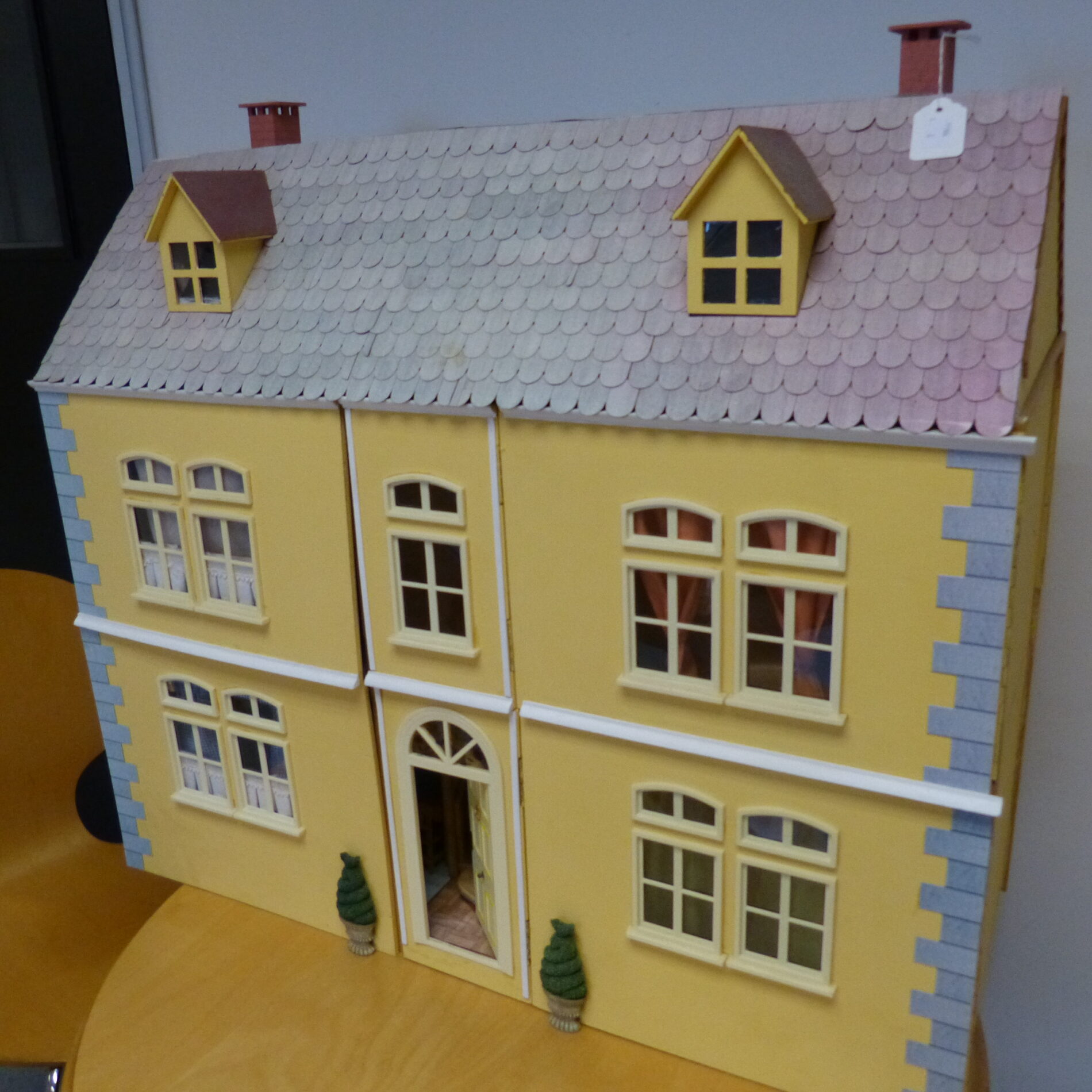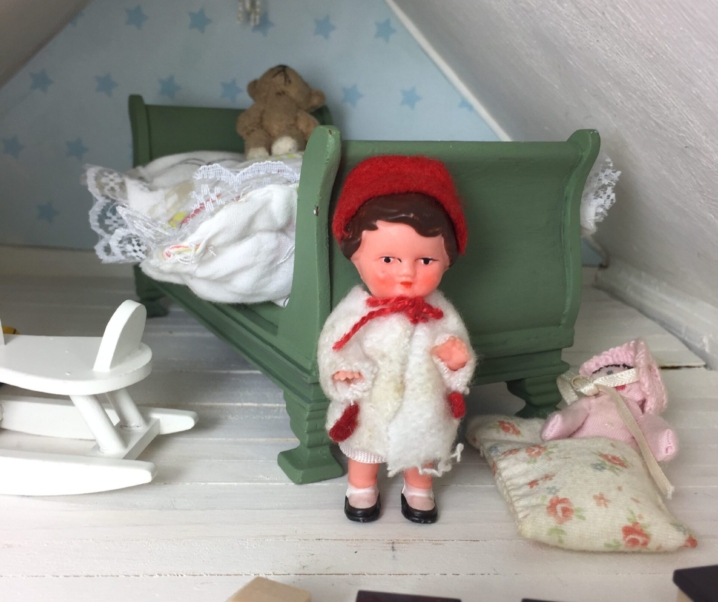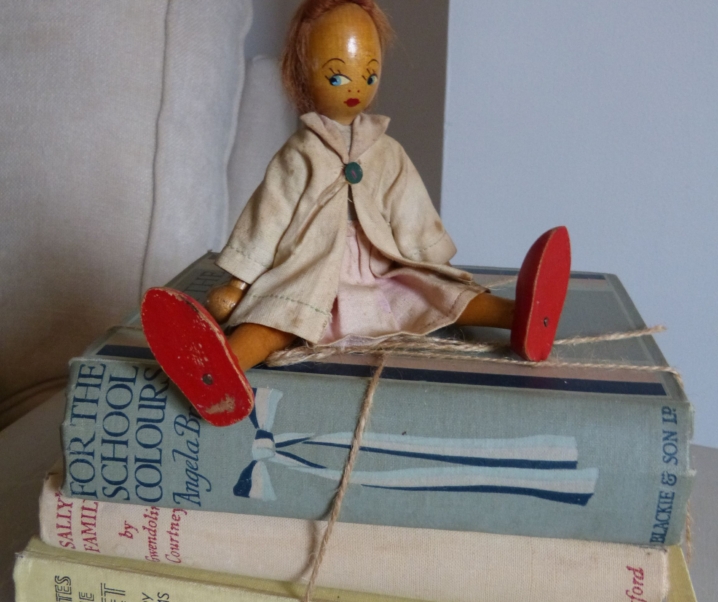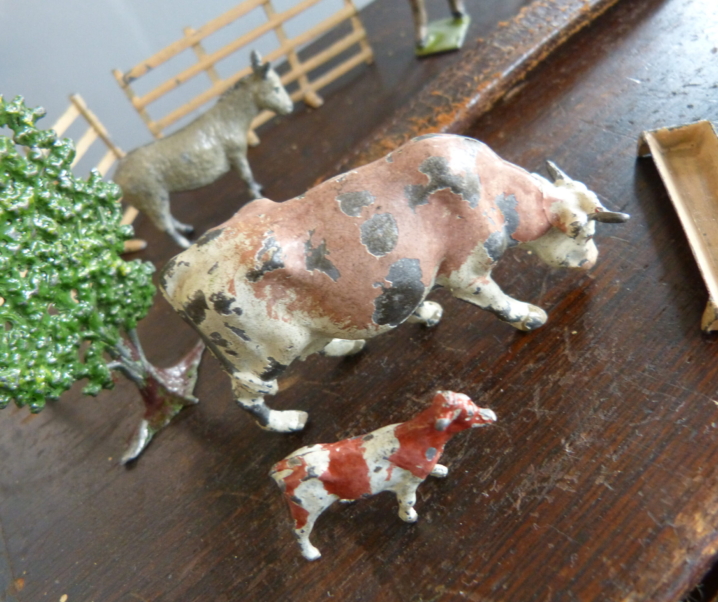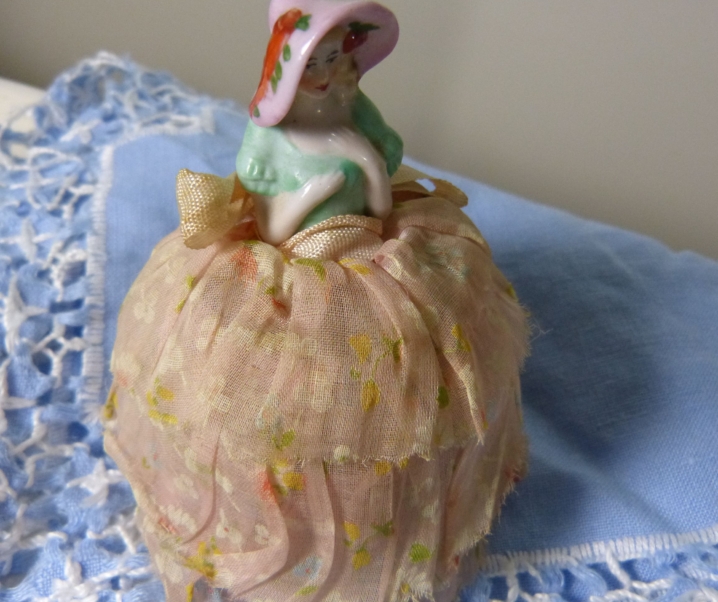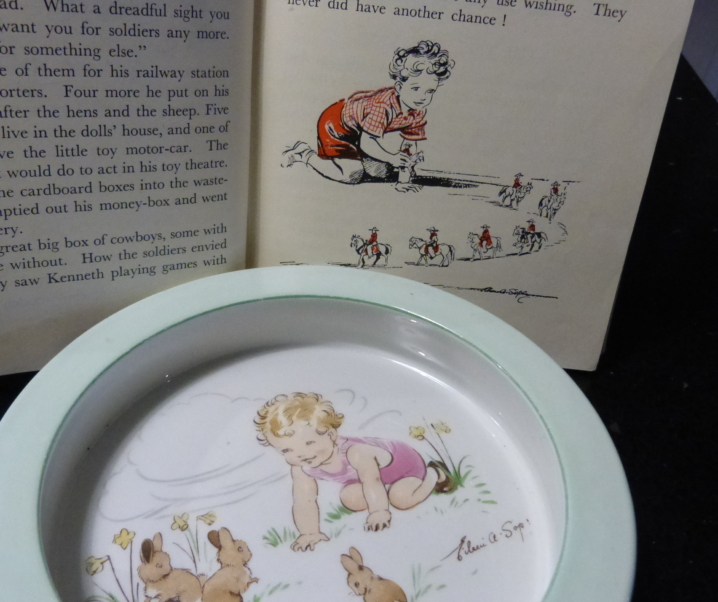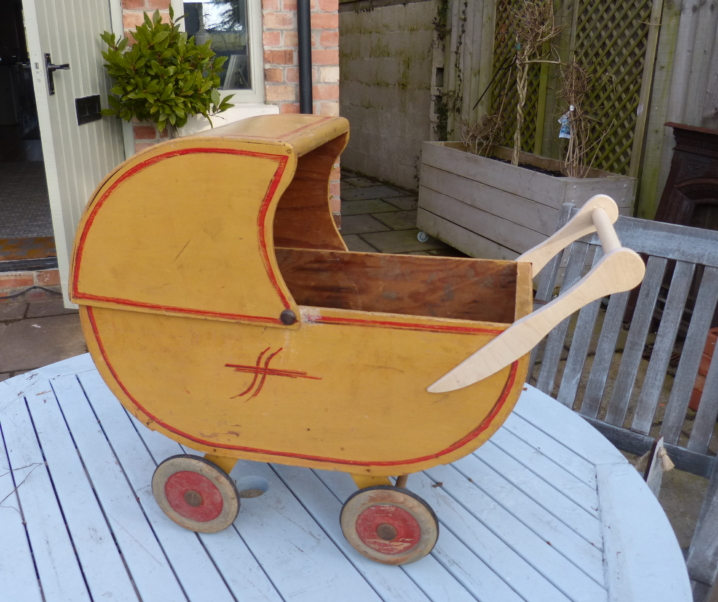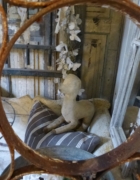It is only fitting to interview Ian Crawford, senior valuer at Bamfords, Derbyshire, about dolls houses in the shadow of a giant, yellow doll’s house waiting to be auctioned at a forthcoming sale.
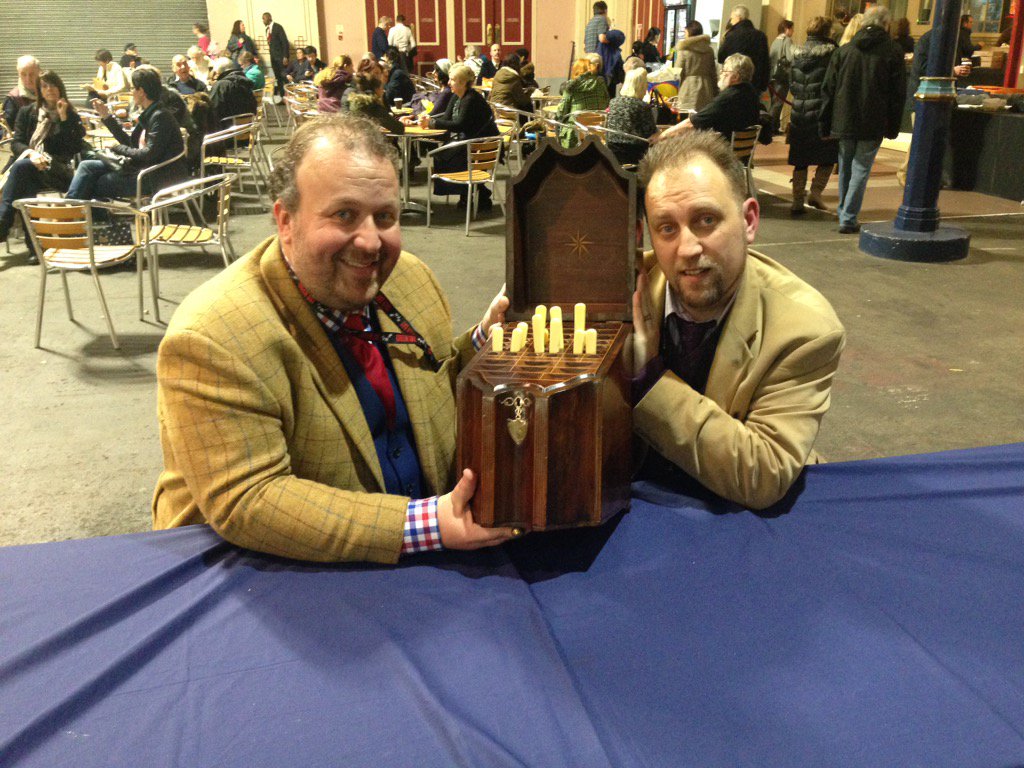
The fact that Ian can get its measure – age, provenance, value – from a brief glance proves his vast experience with toys and collectables.
“Do you like them?” I ask swiping through photographs of my own half-finished dolls house as though I am showing him my firstborn.
“Not really,” he laughs.
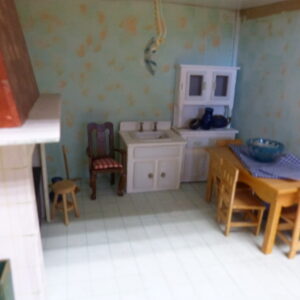
“I am more into boy’s toys, especially sci fi’ figures and comics. But your house seems solid enough. It’s a modern kit house. Ply-wood construction. Needs a lot more work on the interior – have you considered carpet tiles?”
Plywood? Carpet tiles? In my dreams I had unearthed a Victorian original. This doesn’t happen on the Antique’s Roadshow. I had been hoping to give up my day job.
“Sorry,” Ian consoles.
“Valuable dolls houses tend to be in museums or stately homes. I’ve seen a very early example of a dolls house pass through the saleroom. It was estimated in the low thousands but sold for tens of thousands. But’s that’s just one in the last twenty years. They are very, very rare.”
Age is all when it comes to dolls houses. The yellow house may appeal to the enthusiast (me) but it’s just another variation on a modern kit (estimated value £30-50). However, Ian describes a house which came to the saleroom in such terrible condition it was ‘literally falling apart’ and it made £1,800. The difference? The age of the house, scarcity and the quality of the original craftsmanship.
Thanks to the skill of the makers, early dolls houses were things of great beauty. “Before Queen Victoria, dolls houses they were often handcrafted miniature models of stately homes,” Ian explains.
“Most experts agree they were made for adults, not children. These houses were crafted with incredible skill and detail. They don’t come up for sale often because they get passed down through the generations.”
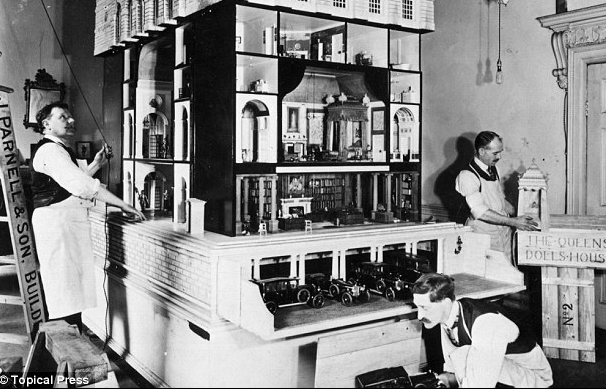
According to Ian, the popularity of Queen Mary’s dolls house, on show at the British Empire Exhibition in the 1920s, fanned the nation’s interest in all things miniature. Around 1.6 million people viewed the house with its artisan-made furniture, carpets, running water and rolls of mini lavatory paper rolls all copied from real pieces at Windsor Castle.
Capitalising on this surge in interest, Lines Brothers (later Tri-ang) became the biggest producer of quality dolls houses from the 1930s with the mock Tudor ‘Stockbroker’ model being the ultimate in aspirational real estate.
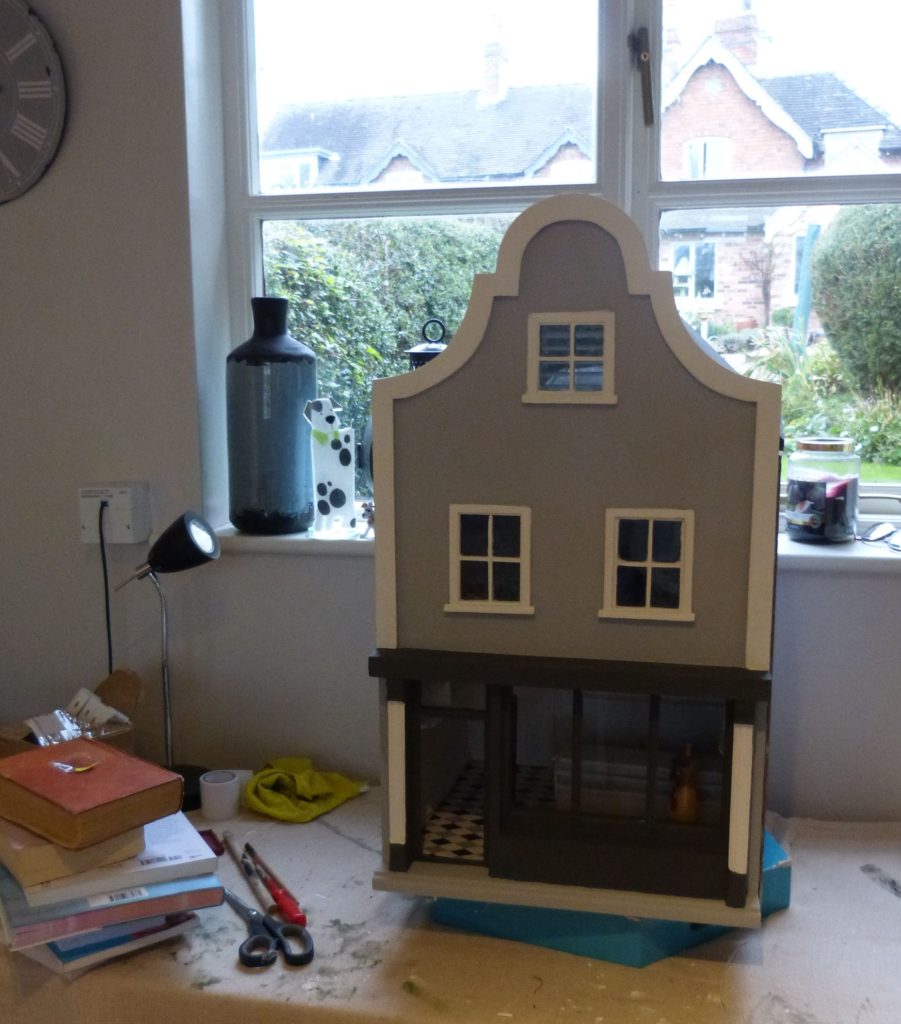
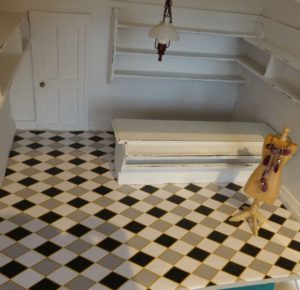
“We see a few mid-20th Century houses being bought by people of a certain age,” Ian laughs trying to avoid my eye.
“People often start to collect toys when the children are grown-up and there’s a bit of spare cash around. They buy things they had – or always wanted. You also get people buying old houses as a restoration project. Once they’re done, they sell it on. It can cost a few hundred to restore an old house and you might get less than a hundred for it but they’ve had their fun. It’s the same with modern kits.”
So there you have it. My desire to own, restore and gloat over my dolls house project has really nothing to do with the noble ambition to restore an antique. It’s more about making up for a deprived (cue violin) childhood. I wanted a posh dolls house when I was little but I am soon to be 53 and really should be over it.
“I felt the same about the Millennium Falcon from Star Wars,” Ian smiles wistfully.
“My mate and I had lot of Star Wars toys and we’d play together but he had the Falcon and I was always a little jealous. I see a few pass through the saleroom but I’m never tempted.”
So back to the Antique’s Roadshow moment. How much is my little ‘treasure’ worth?
“I’d say it was worth around £30-£40 at auction,” he says showing his professional skills are spot on.
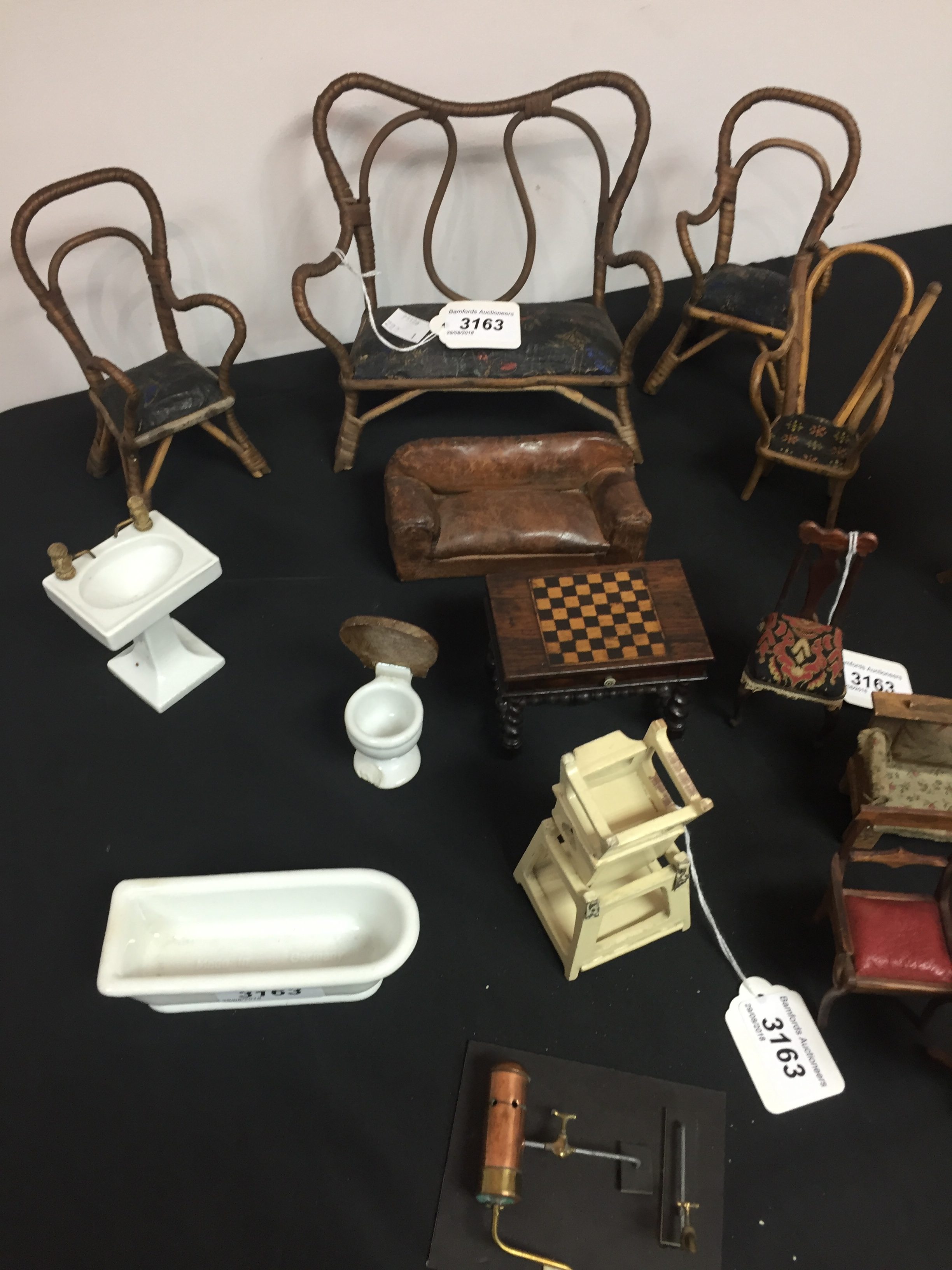
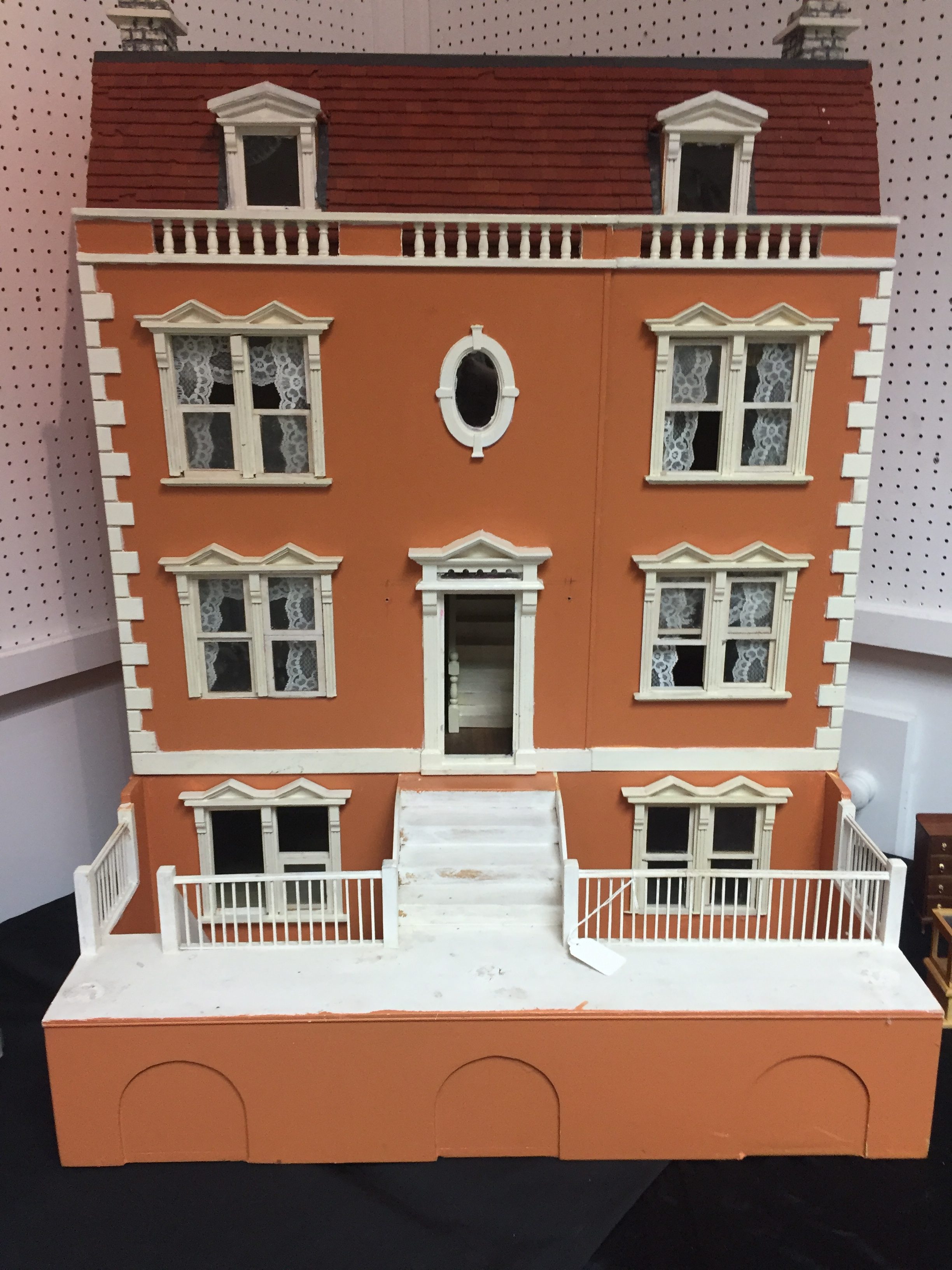
I paid £35 (minus commission) and, so far, I have thrown another £100 into the pot for paint, wallpaper and furnishings.
“Have you tried car boots?” Ian asks.
“You can often pick up whole bags of dolls house furniture for a few pounds. What you don’t need, you sell on the internet and it may cover the cost of your renovation.”
Too late. The eBay orders for a tailor’s dummy, a floral three-piece suite and a dinky shabby chic mirror have already been placed.
But as Ian and I continue to talk about toys which are worth a fortune – invariably un-played with; usually still boxed – I find I don’t care about my investment turning a profit. Toys were, and always will be, made to generate fun and that’s what I am having renovating my little house.
“Most toys weren’t intended to be ornaments or bought to look pretty on a shelf,” Ian agrees.
“There’s something to be said for buying something because you love it. Not that my wife loves my collection of sci fi comics…if she had her way, I am sure they’d be in the bin.”
So are you sitting on a small fortune? Jolly Volley presents a history (and estimated values) of dolls houses in pictures.
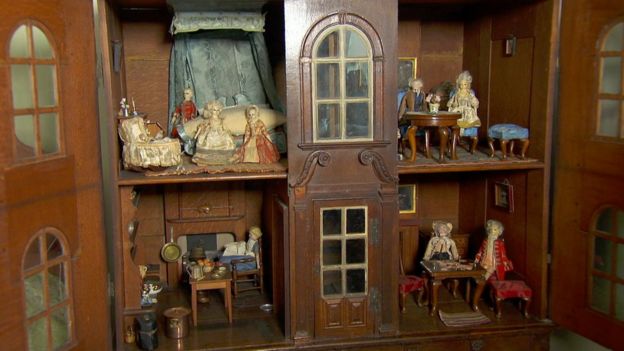
Baby houses
The aristocracy would often commission craftsmen to make an exact miniature copy of their homes along with furniture, paintings, rich textiles and hand-printed wallpapers. These houses are extremely rare with the surviving examples preserved under glass in museums and stately homes. However….
During a recording of the Antique’s Roadshow last May, a father and his little daughter turned up with some old dolls, chairs etc stating they were from a much a larger collection. Understandably, expert Fergus Gambon arranged to visit the family on the Isle of Dogs and discovered an entire dolls house dating from 1705. It was made for a Miss E Westbrook and it had been in the family ever since.
Fergus called it ‘one of the most important baby houses in existence’ and valued it at £150,000.
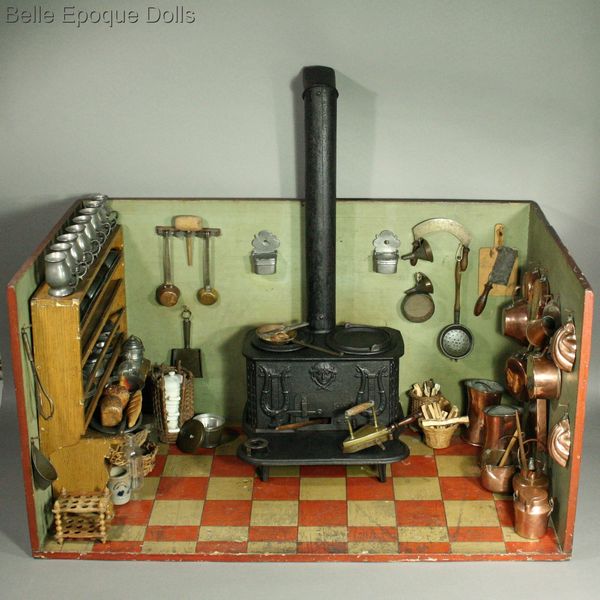
Nuremberg kitchens
Prior to the 1800s, so called ‘Nuremberg kitchens’ came with all manner of domestic paraphernalia including brooms, a stove and cooking pots. It’s thought mothers could pass on domestic skill – using dolls – to their children. According to Nicole Cooley, author of a definitive essay on the history of dolls houses, the girls were not playing but learning how to become ‘a lady of the house’.

The earliest version from the 17th Century are incredibly rare. The Nuremberg House at the V&A Museum of Children is the only one outside Germany and dates back to 1673.
The Belle Epoche web-shop had this stunning example for sale in October 2017. Built for the French market, it features a hearth, pots and plates, bowls, salts and 15 pieces of copperware. It dates from 1840 and it will set you back £4,990e (£4413).
Victorian dolls house

You can pick up unfurnished, empty Victorian houses for between £100 and £300. For those by recognised makers, expect to pay much more. Immaculate Silber and Fleming houses with contents could be worth between £8-10k. A renovation project, a London town house, (pictured left) was sold recently on Ebay for £1395.
Furnishings are often worth more than the house. Wolverhampton-based company Evans and Cartwright made furniture for dolls houses throughout the 1800s including cast iron ranges. Bonhams sold three chairs, from the collection of Vivien Greene (wife of author Graham), for £3,000.

G & J Lines house
Joseph Lines who, together with his brother George founded the original G&J Lines company in the 1870s. Later absorbed into ‘Tri-ang’ (1931) founded by Joseph’s sons. These houses were of the highest quality and were built to last – so you do see them at auctions. The popular ‘Stockbroker’ was based on the Surrey home of one of the brothers and accessories included a plumbed-in bath, flushing toilet and a vacuum cleaner.

No18 (see main picture) was sold in 2014 by KT Miniatures with an original fireplace and some of the wallpaper still intact. You can expect to pay anything from a few hundred to few thousand.
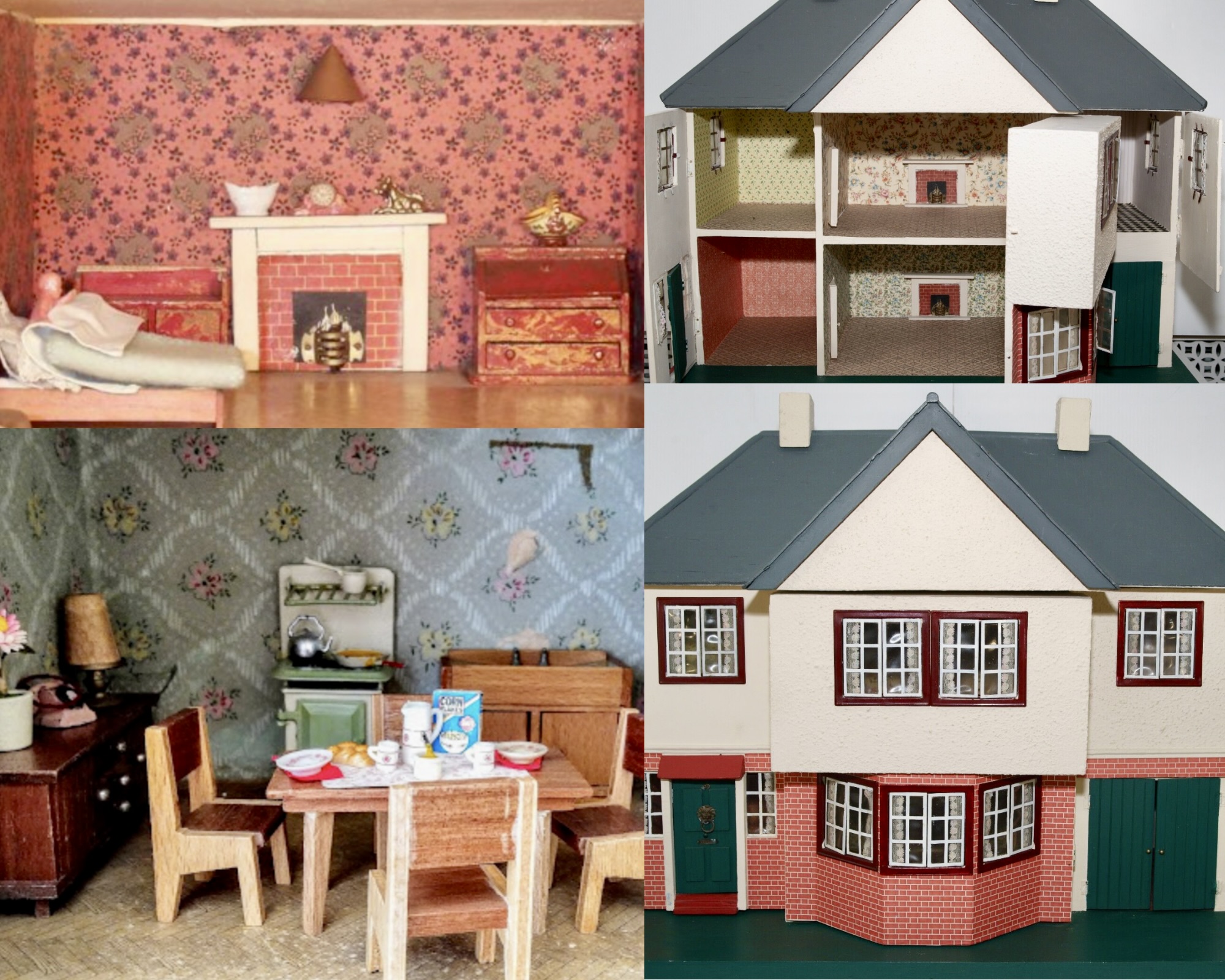
The Tri-ang house
Tri-ang houses reflected popular tastes in architecture and interiors and included cottages (some with a thatched roof), country houses, bungalows, and state-of-the-art geometric designs of the 1930s.
Sadly, the company went into receivership in 1971 with many iconic toys going into the skip.
EBay has some 1960s Tri-ang dolls houses up for sale. Expect to pay around £50-£200 depending on condition. Period fittings can fetch a lot more. An EBay search revealed a small writing bureau with an asking price of £14.
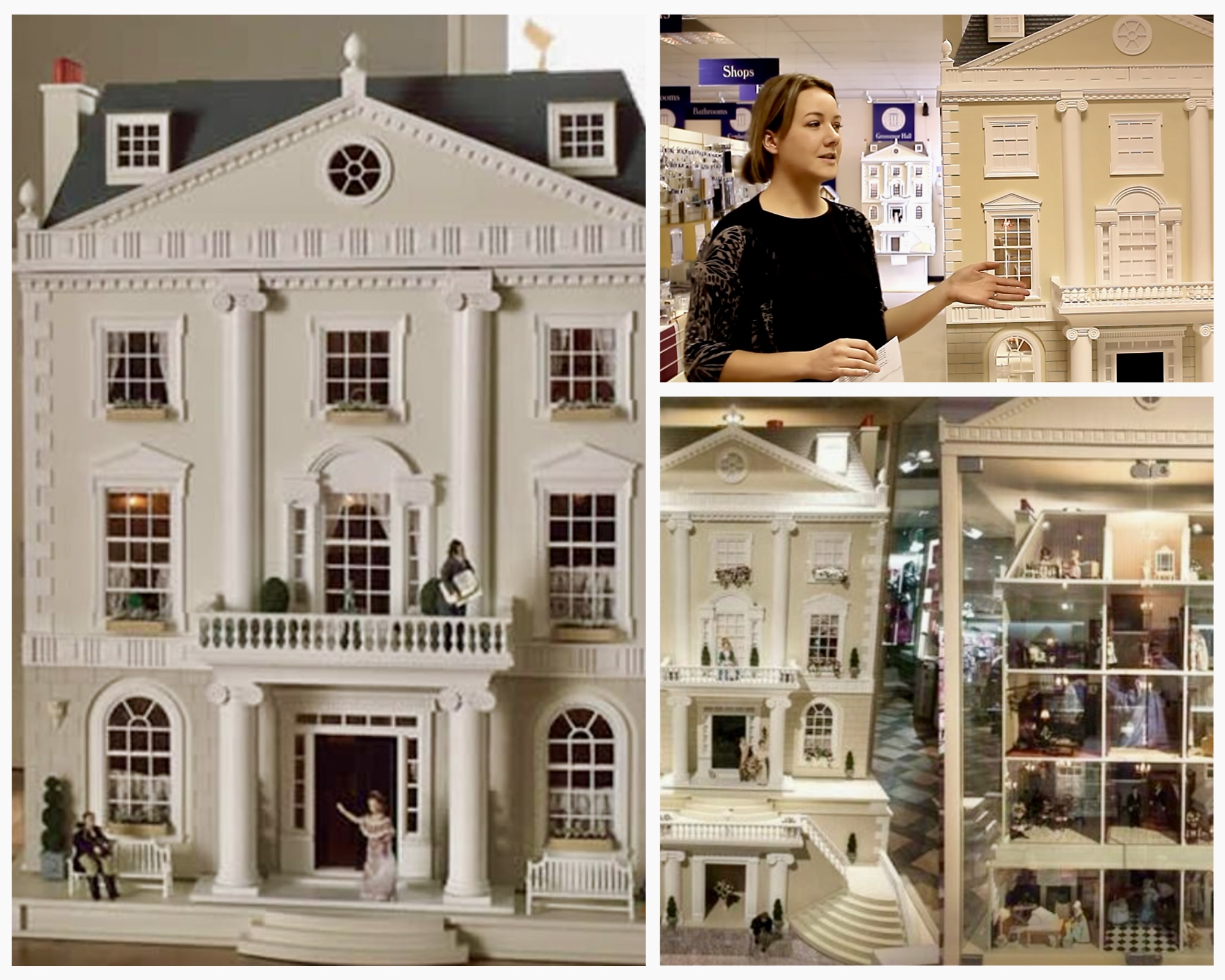
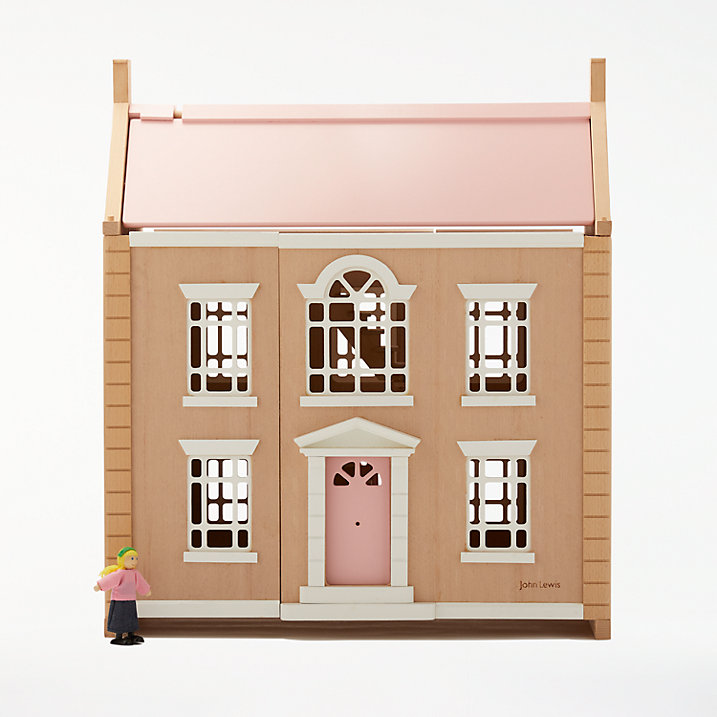
Kit houses
Since the 1980s, the dolls house market has been dominated by the popularity of the kit. A kit is a pre-cut dolls house which owner – young or old – can decorate and furnish it to their own taste.
To feed this hobby, trade shows are held throughout the year by various miniature organisations, where artisans and dealers can display and sell miniatures. How-to seminars and workshops are part of the show. The Kensington Dolls House Festival (next on on December 2) can attract up to 2,000 visitors.
You can pay £75 for a Leckford dolls house kit from John Lewis. eBay is currently listing a similar second-hand and already assembled John Lewis house, plus two boxes of furniture and figurines, for £50. In short, unless you are doing something amazing with your kit; you may lose money when you come to sell.

The designer house…

If a DIY kit isn’t quite your thing – and you have a big cash deposit – there are companies making houses which will be right up your street.
Dragons of Walton Street; specialises in designing up-market nurseries. As part of the service, MD Lucinda Croft can provide a bespoke Georgina mansion complete with sumptuous furnishing (see above). It’s not cheap – expect to pay upwards of £2,000.
“A dolls’ house sums up the magic and innocence of childhood,” says Lucinda, a mum of two.
“It encourages children to use their imagination and allows parents to get carried away in the nostalgia.”
For something more contemporary, designer Elaine Shaw makes houses featuring immaculate modern furnishings and gadgets including iMac, X-BOX and flat screen TV (all working models). One floor will set you back £195. A miniature cow hide chaise £45.
As to re-sale, one of Lucinda Croft’s bespoke homes Walton House has been valued at £22,500.
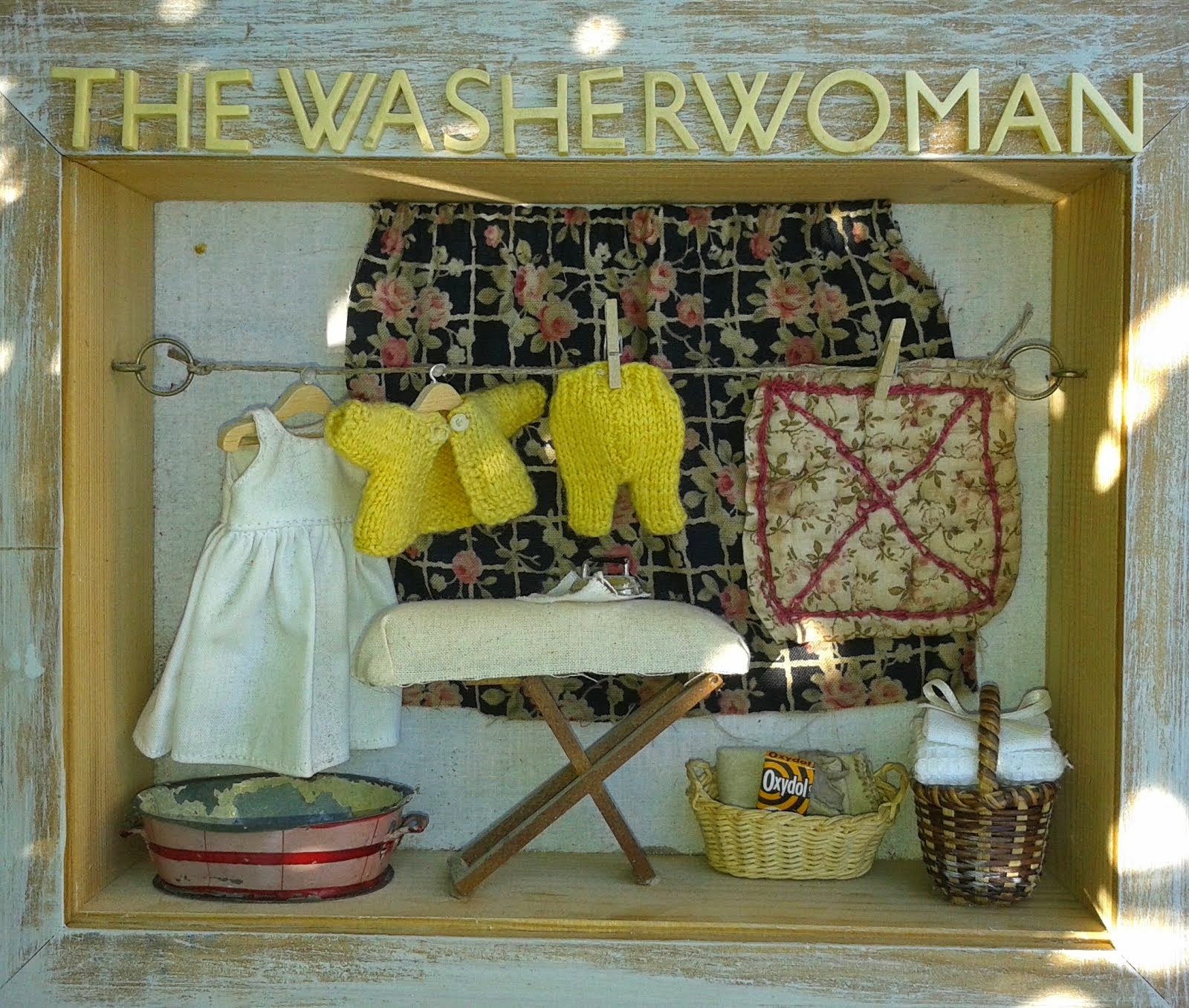

The Instagram house
Instagram is fuelling a resurgence in passion for all things miniature. Kate Ünver’s popular site, The Daily Mini has 125k followers and more than half of them are under 25. The site offers daily photographs of miniatures including a lamb dinner, a UFO novel and a Greek harbour scene.
One of the best kit house on Instagram was made and styled by interior designer and photographer Janet Parrella-van den Berg (right) who runs Etsy boutique White and Faded. Janet loves to source and display Continental and English antique pieces and the relaxed elegance of her home is reflected in her dolls house project.
As Janet says. “I bought some basic furniture and a basic house that I changed to my style. As long as the structure is right, with paint and a saw you can do anything!”
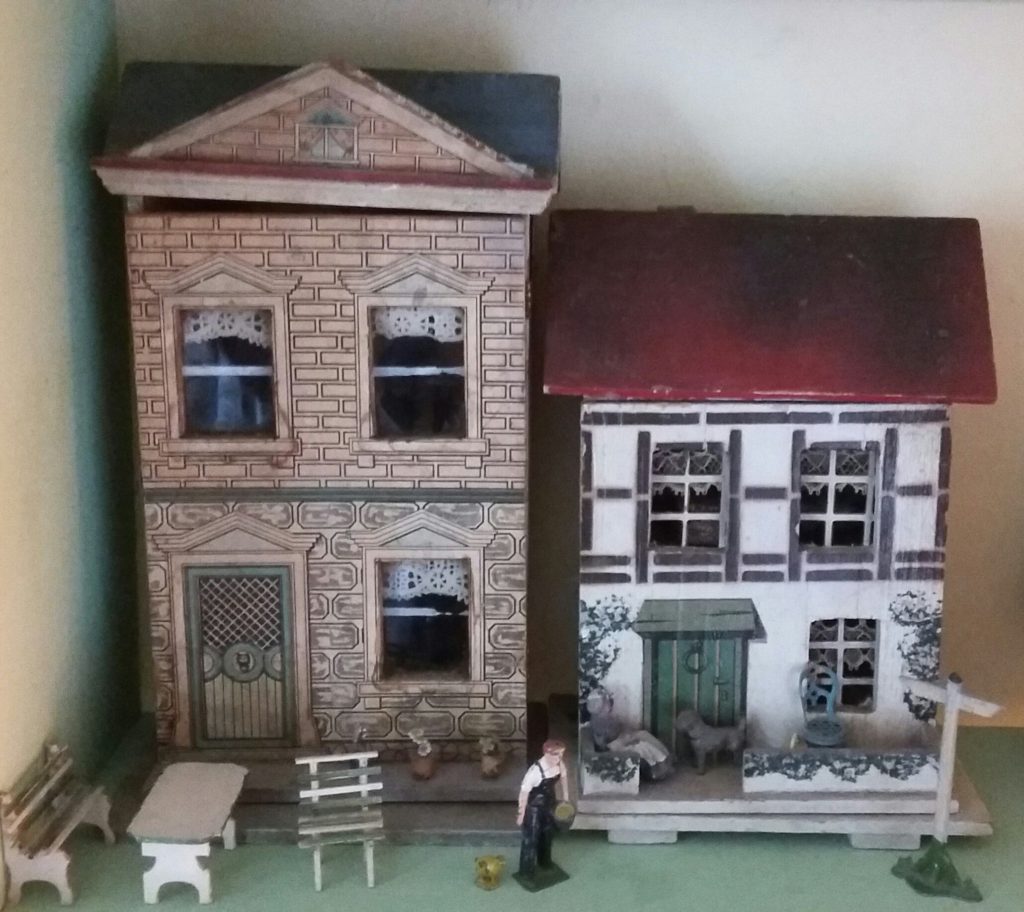
“I love the miniature worlds that you can create within dolls houses,” says Lizzie Van Hasselt, who has been collecting, resorting and selling dolls houses for 30 years and runs a charming Instagram account called The Washerwoman.
“Restoration dolls house projects are also incredibly relaxing and a good way of switching off from work and stresses of everyday life! I now collect just small houses, ones that fit on a shelf. I bought a tiny little German house at auction a few years ago which I love. It is just 24 inches tall and has just two rooms. The fun challenge is finding furniture and other tiny items to furnish it!”

Value? It is in the eye of the purchaser. The sky is the limit with bespoke houses. The Astolat Dollhouse Castle, created over the course of 13 years by artist Elaine Diehl, was finally completed in the 1980s. It has 29 rooms featuring furniture, glass and decorations made by some of the finest craftsmen in the world. It is worth $8.5 million.
If would like your dolls house valued by an expert, contact Bamfords on Derby 01332 210000.


